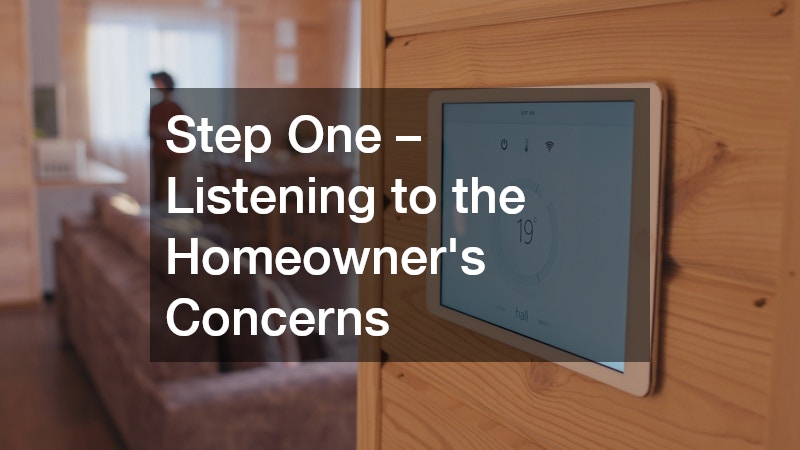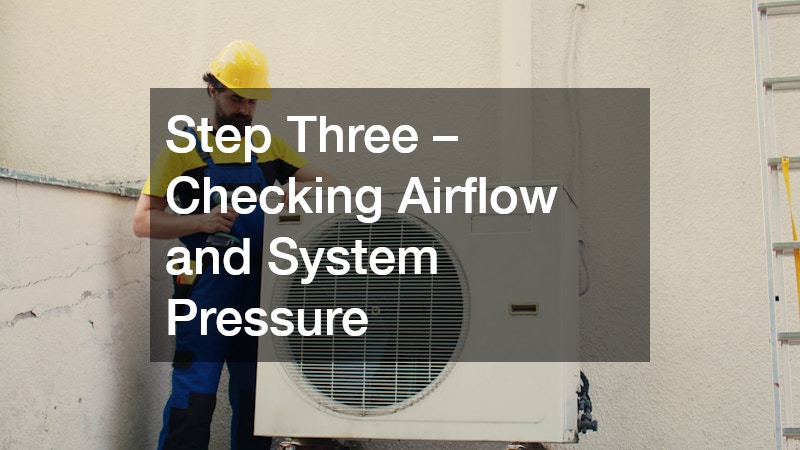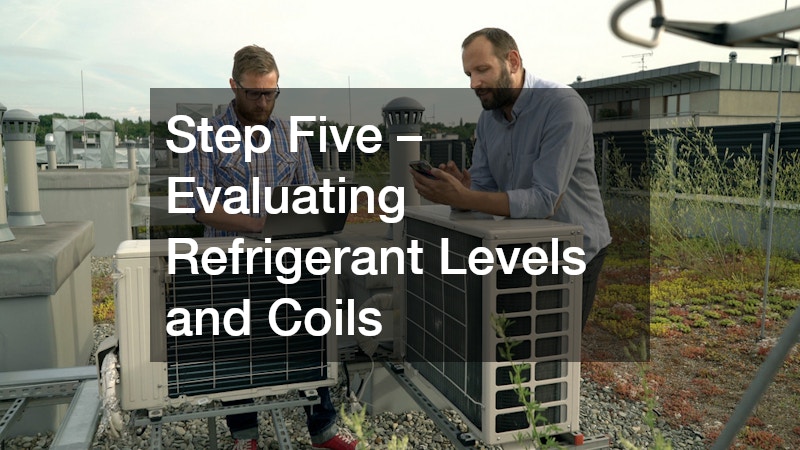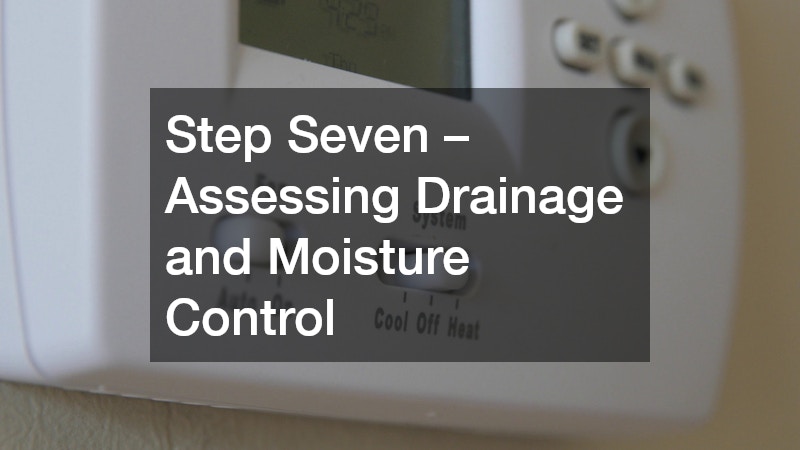When something goes wrong with a heating or cooling system, homeowners often notice the symptoms first—uncomfortable temperatures, weak airflow, odd noises, or higher-than-expected utility bills. While these warning signs may seem simple, the underlying causes can be complex. Modern HVAC systems combine electrical, mechanical, and refrigerant components that must work in harmony.
Diagnosing the source of a malfunction requires experience, training, and specialized equipment. Professional technicians approach every service call as a process of elimination—testing, observing, and verifying until the exact problem is found. This careful method prevents unnecessary part replacements and ensures that the system runs efficiently once repairs are made.
HVAC professionals play an important role in protecting indoor comfort and system longevity. They follow industry standards, safety protocols, and manufacturer specifications when handling electrical systems, refrigerants, or air-handling units. Their ability to interpret subtle performance data distinguishes them from the do-it-yourself approach many homeowners try before calling for help.
In this article, readers will learn how qualified HVAC specialists diagnose common system issues, the tools they rely on, and the steps they take to restore heating and cooling performance.

Step One – Listening to the Homeowner’s Concerns
Every accurate diagnosis begins with communication. When a technician arrives on-site, they start by asking detailed questions about the problem:
-
When did the issue start?
-
Are there specific rooms that feel hotter or colder?
-
Has there been a sudden rise in the electric bill?
-
Are there any new sounds, odors, or cycling patterns?
This dialogue gives professionals an initial framework. A report of inconsistent temperatures might point toward duct leakage, while sudden shutdowns could suggest electrical or control faults. The homeowner’s description often determines which component the technician checks first.
Good communication also prevents misinterpretation. For example, a client might believe their air conditioner is low on refrigerant when the true problem is restricted airflow due to a dirty filter. By combining observation with technical knowledge, professionals shorten the diagnostic process.
Step Two – Visual Inspection and Initial Assessment
After gathering information, technicians perform a complete visual inspection of both indoor and outdoor units. The goal is to identify anything that looks abnormal before connecting diagnostic instruments.
Common visual checks include:
-
Dirty or clogged air filters restricting airflow.
-
Frozen evaporator coils, which indicate low airflow or low refrigerant.
-
Water pooling around the furnace or air handler, suggesting drainage issues.
-
Corrosion on wiring, burned connectors, or damaged insulation.
-
Blocked condenser coils outside the home.
Technicians also verify that the thermostat settings match the homeowner’s comfort needs and that the fan operates in the correct mode.
A trained eye can spot signs that a system has been struggling long before major failure occurs. For instance, oil stains on refrigerant lines may reveal a slow leak, while a vibrating cabinet could indicate an unbalanced blower wheel. A methodical walk-around ensures no clue is overlooked.

Step Three – Checking Airflow and System Pressure
Airflow is one of the most important yet overlooked elements of system performance. Even a perfectly functioning compressor cannot deliver comfort if the air distribution network is compromised.
Professionals use tools such as manometers and anemometers to measure static pressure and air velocity within ducts. These readings reveal whether the blower is moving the correct volume of air for the home’s size and design.
During this stage, technicians often:
-
Measure pressure on both supply and return sides of the duct system.
-
Inspect ductwork for disconnections, leaks, or crushed sections.
-
Confirm that vents and registers are open and unobstructed.
-
Evaluate whether the filter type and duct size are appropriate for the equipment.
An airflow imbalance—too much pressure on one side or inadequate return air—reduces efficiency and causes premature component wear. Correcting these issues may involve sealing leaks, cleaning ducts, or adjusting fan speed.
Some homeowners contact their AC company only when comfort drops dramatically, but proactive airflow testing during regular maintenance visits prevents many of these problems before they escalate.
Step Four – Testing Electrical Components
Electrical systems power every motor, sensor, and circuit board inside an HVAC unit. When even one connection loosens, performance suffers. Professionals use multimeters to test voltage, amperage, and continuity through each circuit.
They inspect:
-
Capacitors, which store energy and help motors start smoothly.
-
Relays and contactors, which control high-voltage switching.
-
Blower-motor wiring and compressor terminals.
-
Control boards and safety switches.
If readings fall outside manufacturer specifications, components are repaired or replaced. Loose wiring is tightened, and corroded terminals are cleaned to ensure reliable contact.
Because HVAC units involve high-voltage electricity, only trained specialists or a licensed HVAC contractor should perform these tests. Attempting repairs without the proper tools or safety procedures risks shock and system damage.
Electrical diagnostics also include checking grounding, fuse integrity, and thermostat signal transmission. A malfunctioning circuit can mimic other symptoms—such as poor airflow or irregular temperature cycling—so technicians verify electrical integrity before moving on.

Step Five – Evaluating Refrigerant Levels and Coils
Refrigerant is the lifeblood of any air-conditioning system. Too much or too little affects both performance and efficiency. Professionals connect pressure gauges and temperature probes to measure the refrigerant’s suction and discharge pressures.
Low pressure often points to a leak somewhere in the system. Using electronic detectors or ultraviolet dye, technicians locate the exact point of loss, repair it, and recharge the system to the correct level. Overcharging is equally problematic, leading to high head pressure and compressor stress.
Dirty evaporator or condenser coils are another frequent discovery. Dust and debris reduce heat transfer, forcing the unit to work longer to achieve target temperatures. Cleaning the coils restores efficient operation and prevents future failures.
Proper refrigerant handling is highly regulated; technicians must be certified to recover, recycle, or recharge systems safely. These procedures protect both the environment and system components.
Professionals from established HVAC companies rely on digital gauges that record precise readings, allowing them to confirm that the refrigerant cycle operates exactly as designed.
Step Six – Inspecting the Thermostat and Control Systems
Sometimes, what appears to be a major system malfunction is simply a thermostat issue. HVAC professionals verify that thermostats are calibrated and communicating correctly with the unit.
Common diagnostic steps include:
-
Testing voltage between thermostat terminals.
-
Ensuring the device is level and located away from direct sunlight.
-
Checking that programming or smart-home settings align with the homeowner’s schedule.
When necessary, technicians reset or replace thermostats, particularly older models that have lost accuracy. With smart thermostats, they verify Wi-Fi connections and software updates to maintain compatibility with modern HVAC equipment.
Control systems also include sensors that measure indoor and outdoor temperatures, humidity, and coil conditions. Malfunctioning sensors may cause the unit to short-cycle or fail to maintain consistent comfort.
A thorough review of these controls ensures that every component communicates seamlessly within the system.

Step Seven – Assessing Drainage and Moisture Control
Moisture management is critical in air-conditioning systems. Condensation naturally forms on coils during cooling, but that water must drain properly. HVAC technicians inspect drain pans, condensate lines, and pumps for blockages or buildup.
A clogged drain line can trigger system shutdowns or cause water damage inside the home. By flushing lines with approved cleaning solutions and installing safety float switches, technicians prevent future overflows.
Humidity levels are also evaluated. If indoor air feels sticky despite cooling, the system may be oversized, cycling too quickly to dehumidify effectively. Adjusting fan speeds or recommending dehumidification accessories can correct this imbalance.
Maintaining clean drainage paths prevents mold growth and preserves air quality. Proper moisture control also protects nearby wiring and components from corrosion.
Step Eight – How Professionals Fix Common HVAC Issues
After diagnosing the root cause, professionals proceed with targeted repairs or adjustments. Each issue demands a specific remedy, executed according to safety and manufacturer standards.
Dirty Filters and Coils
The simplest yet most common problem is restricted airflow from clogged filters or coils. Professionals clean coils using specialized solutions and replace filters with ones suited to the system’s airflow requirements. This single action often restores lost efficiency immediately.
Refrigerant Leaks
When leaks are detected, technicians repair the affected section, pressure-test the system, evacuate moisture, and recharge refrigerant to the precise level. Accurate charging ensures proper cooling capacity and prevents compressor damage.
Electrical Failures
Defective capacitors, contactors, or relays are swapped out with compatible components. Wiring repairs restore continuity, and voltage tests confirm stability. These fixes eliminate short cycling and erratic performance.
Thermostat Malfunctions
If calibration fails, the thermostats are replaced and reprogrammed. Smart units receive firmware updates and connection checks. Correct thermostat operation directly influences energy efficiency and comfort.
Ductwork Problems
Leaky or poorly insulated ducts waste conditioned air. Technicians use mastic sealant, foil tape, or insulation wraps to close gaps. Balancing airflow through dampers ensures each room maintains consistent temperatures.
Drainage and Humidity Corrections
Clearing condensate lines, adjusting fan speeds, or adding secondary pans prevents water buildup. Proper humidity control also extends furniture and flooring life by preventing excess moisture.
Each step demonstrates how professional expertise turns systematic testing into long-term reliability.
Step Nine – Why Professional Diagnosis Matters
Modern systems are intricate networks of sensors, motors, and circuits. Replacing a single part without identifying the root cause may temporarily mask symptoms but rarely provides lasting relief. Professional diagnosis ensures repairs address the real issue, not just the visible effect.
Technicians use calibrated instruments to produce accurate readings unavailable through basic consumer tools. This precision prevents unnecessary expenses and minimizes downtime.
Safety is another consideration. Handling high-voltage electricity or refrigerants requires certification and experience. Attempting to perform these repairs without training risks injury and can void manufacturer warranties.
Homeowners who rely on professional HVAC services benefit from efficiency improvements that lower monthly energy use. Accurate diagnostics reduce the likelihood of emergency breakdowns during peak heating or cooling seasons and extend the equipment’s overall lifespan.
Step Ten – Preventive Maintenance to Avoid Future Problems
Preventive maintenance is the foundation of HVAC reliability. During seasonal tune-ups, technicians inspect every major system element before minor wear develops into a costly breakdown.
Common preventive tasks include:
-
Replacing or cleaning air filters.
-
Tightening electrical connections.
-
Lubricating motors and bearings.
-
Cleaning condenser and evaporator coils.
-
Verifying thermostat calibration.
-
Checking refrigerant pressure and airflow.
Scheduling maintenance before extreme temperatures arrive ensures systems run efficiently when needed most. Some homeowners enroll in maintenance plans through their preferred HVAC company to receive scheduled service reminders and priority appointments.
Professionals performing routine upkeep also identify opportunities for upgrades—like improved filtration, advanced thermostats, or duct sealing—that can enhance efficiency and comfort even further.
Step Eleven – The Tools of the Trade
Diagnostic accuracy depends on the instruments technicians use. Standard toolkits include digital multimeters, temperature clamps, pressure gauges, airflow meters, and leak detectors.
Advanced equipment like infrared thermometers and thermal cameras reveals hidden problems, such as uneven heating on electrical boards or insulation failures. Software-based analyzers connect to system control boards, displaying error codes and performance data in real time.
Technicians constantly calibrate their tools to maintain precision. Training programs and certifications keep professionals current with evolving technologies such as variable-speed compressors and smart controls.
Because HVAC systems combine electrical, mechanical, and thermodynamic elements, expertise across multiple disciplines is necessary. Many technicians begin their careers in HVAC installation before advancing into diagnostics and repair. That early experience gives them insight into how each component should function when operating correctly.
Step Twelve – System-Wide Efficiency and Performance
Once individual faults are resolved, HVAC professionals evaluate the entire system to confirm everything works together as designed. This holistic check covers airflow balance, refrigerant pressures, and energy consumption. Small adjustments—such as aligning blower speeds with duct capacity—can improve comfort dramatically while preventing overwork on the compressor and motors.
During this phase, technicians also make sure insulation and weather-sealing throughout the home are adequate. If exterior leaks let conditioned air escape, even a perfectly tuned system wastes energy. Coordination with other trades, such as heating and cooling services or insulation specialists, ensures that efficiency improvements extend beyond the mechanical equipment itself.
Step Thirteen – Cost and Time Efficiency of Professional Repairs
Professional diagnosis may appear more expensive upfront, but it often saves time and money overall. Technicians who locate the real issue on the first visit prevent repeat service calls and unnecessary part replacements. Their detailed reports also give homeowners a clear picture of system condition and anticipated lifespan.
Repair time varies depending on component accessibility and severity of damage. Minor electrical repairs might take less than an hour, while refrigerant leak repairs or duct sealing could span several hours. Many HVAC contractors offer service agreements that include regular checkups and discounts for prompt scheduling, further reducing costs over time.
Step Fourteen – The Role of Emergency and Seasonal Service
When extreme temperatures strike, having professionals ready to respond quickly can make the difference between comfort and emergency discomfort. Companies offering 24-hour AC repair service handle urgent failures such as frozen coils, tripped breakers, or sudden loss of cooling capacity.
Likewise, during winter, technicians focus on heating reliability, inspecting burners, ignition systems, and heat exchangers. Seasonal maintenance packages cover both heating and cooling modes, helping prevent unexpected breakdowns when systems work hardest.
Diagnosing and fixing HVAC issues requires far more than replacing a part and hoping for the best. It’s a disciplined, step-by-step process that blends technical knowledge, precision instruments, and real-world experience. From the initial homeowner interview to the final verification of performance, professionals follow a structured workflow designed to uncover the root cause of each symptom.
Their work spans every component of indoor comfort—electrical systems, ductwork, airflow, refrigerant cycles, and digital controls. Whether performing routine maintenance, emergency service, or complete replacement, certified technicians uphold safety, efficiency, and environmental standards at every step.
Investing in professional care leads to lower energy bills, longer equipment life, and fewer surprises during peak seasons. Reliable HVAC services and well-timed inspections not only restore comfort but also safeguard the investment homeowners make in their property.
For anyone experiencing inconsistent temperatures, unusual sounds, or reduced performance, consulting trained specialists in AC repairs ensures accurate diagnosis and lasting solutions. Their expertise turns complicated mechanical systems into dependable, efficient comfort year-round with air conditioning services.


